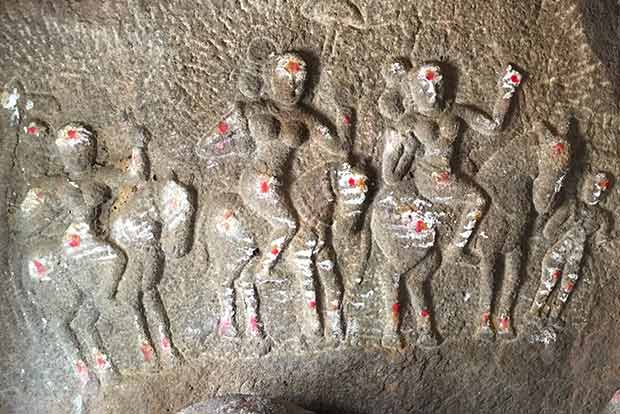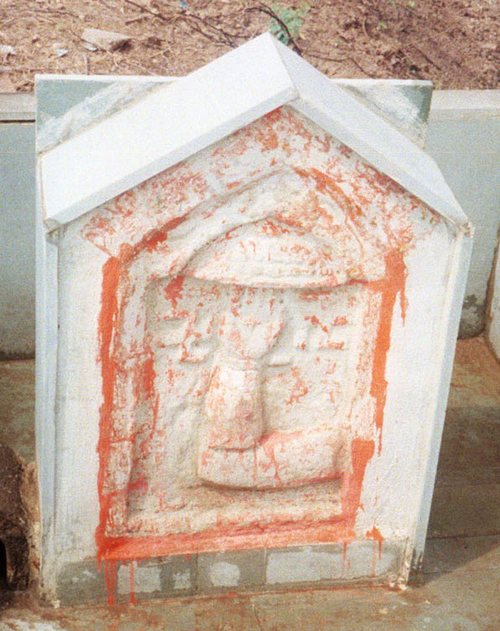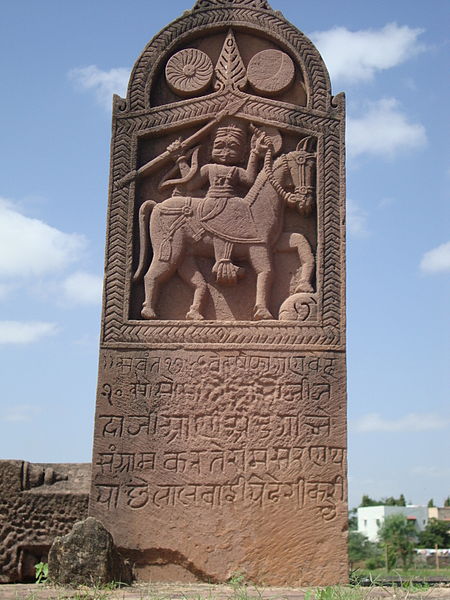
| TOMBSTONES OVERVIEW Technically
speaking Hindus are cremated hence the appropriate word for tombstone
in Hinduism is Padya, Pariya, Lohari, Khambhi, Natukal, Virakallu,
Veera Sila or Virgal, etc.
Whenever a tradition starts it has some base and logic behind it. The herostones are found in many states in Bharat. Theses herostones are of male, females as well of female sati.
We can find tombstones / herostones in Bharat, Iran, Europe, etc.
First came civilization and then religion. Hindu word came from Sindhu (indus) and Sindhu represents civilization not religion. If we have to check since when has this tradition of herostones started in Bharat than first we search in Veds. As far as I have checked I have not found mention of herostones in Rig Ved (I may be wrong) so, I checked Purans. In Markandey Puran there is one time mention of Tombstone Chapter 39 page 75.
In places filled with noise near fire or water, dilapidated cow-sheds, in the crossings of the four roads, on withered leaves, in a river, in cremation grounds filled with reptiles, in dangerous places, on the bank of a well, on tombstones, on ant-hills - in all these places should a wise man renounce the practice of Yoga. (48-49) So long as the quality, of goodness is not properly developed, (bad) times and places should be avoided. The sight of an impious man does not lead to Yoga and so he should be avoided.
To download Markandey Puran which I took for refrence Click here.
Tombstones in Bharat are mainly found in Brahmin and Rajput community. Brahmins in ancient times were temple priest, teachers, advisors to king, scholars, rishis, yogis, in some cases there have been Brahmins warriors (especially those Brahmins who came from Persia (Iran) to Bharat), etc. Rajput comunity is mainly a warrior community.
There has always been a alliance between Brahmins and Rajputs.
The tradition of tombstones / tombstones might have started from Aryans of Persia (Iran) or Yamnaya culture. To explain this let me give you a example of my own family. I am a Aryan from Brahmin family and my ancestors came from Persia (Iran) to Bharat approx. 1150 years ago. In my family there is herostone / padya of Sati but those Brahmins who lived in Bharat since ancient times dont have herostones in their family. I maybe wrong but I feel that all those Aryans who came from Persia (Iran) to Bharat have tradition of herostones including the Rajputs who came from Sistan, Persia (Iran).
The oldest tombstones found is in Shahr-e Sukhteh located in located in Sistan and Baluchistan Province, Persia. The culture of Shahr-e Sukhteh is more than 5,000 years old and this is the same time period of Mahabharat in which Krishna Dvaipayan Ved Vyas wrote 18 Purans.
During the time of Mahabharat in Kurukshetra war one of my ancestor Kripacharya was in Kaurav army. He was the Kul Guru (family priest) of Kauravas and along with the ancient Pallav Dynasty as constituting a branch of the Pahlavs, Parthavs or Parthians of Persia he took charge of North point of Kaurav army.
If there is not much written record as to how the tradition of tombstones / herostones started in ancient texts of Bharat then the written records can be in Persia with the Zoroastrians but this is a matter of research.
To know about Aryan homeland and tombstones Click here. |


